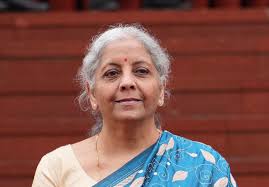In view of the on-going culture of concessions and freebies, promoted by various political parties, some states have started witnessing acute fiscal crisis.
Himachal Pradesh and Punjab – ruled the Congress and the AAP respectively – are the two states facing a huge surge in their outstanding debt burden.
Freebies and other concessions announced at the time of polls could possibly get good result, but they generally turned into bad economics.
Himachal Pradesh’s debt is increasing day by day
Himachal Pradesh is facing a significant financial problem, which is clearly the result of rising wage and pension bill and rise in subsidy burden that has led to increased borrowings, alongside limited sources of revenue generation.
With the growing financial issues, the Congress government in the state is enforcing fiscal discipline through various measures, such as rationalization of existing subsidy schemes, adjusting the date of release of salaries and revoking the pension of disqualified legislators.
According to reports, its outstanding debt may rise to Rs 97,000 crore in the current year from nearly Rs 88,000 crore last year.
As a percentage of Gross State Domestic Product (GSDP), Himachal’s debt has risen to 42.3 percent in 2023-24 and is estimated at 42.5 percent for the current year.
In 2019-20, the debt was 35.3 percent of the GSDP.
The increase in expenditure on salaries and pensions has led to a significant jump in Himachal Pradesh’s spending.
Meanwhile, recent Finance Commissions have recommended grants to correct imbalances in the revenue account for some states that may remain after accounting for devolution of central taxes.
The 15th Finance Commission recommended revenue deficit grants worth Rs 2.95 lakh crore for 17 states.
Punjab with freebies, subsidies and the issues
Punjab is another state that has been reeling under huge financial crisis as freebies, subsidies, and rising salary and pension bills. Punjab’s outstanding debt in the current financial year is projected to be 44.1 percent (as a percentage of GSDP).
Subsidies and rise in salaries and pensions have led to swelling of revenue expenditure, which, in the current year, accounts for 94 percent of the total expenditure.
The bulk of the grant recomended by the 15th Finance Commission recommended has already been provided till 2023-24. It will get reduced to zero in 2025-26, further deepening the financial crisis of the state.
According to an estimate, India’s overall subsidy bill may go up by Rs 50,000 crore in the current fiscal year because of increased expenditure on fertilizer, cooking gas and food security.
The government aims to cover this higher spending from savings under other heads in its Rs 45 trillion FY24 budget, it said.
The Centre, according to official data, allocated Rs 1.05 trillion for fertilizer subsidy in FY23, which was revised to Rs 2.54 trillion due to a sharp rise in fertilizer prices caused by the Russia-Ukraine war.
The food subsidy, which reached Rs 2.87 trillion in FY23, has been set at Rs 1.97 trillion this fiscal year.
Higher procurement costs and extension of the free food grain scheme, on the other hand, may add Rs 15,000 crore to the overall bill this fiscal year.
An energy audit report for the first quarter of 2024-25 highlighted that the number of domestic consumers increased by 6 lakh in two years, driven largely by the bifurcation and trifurcation of power meters and new connections. Data from PSPCL also shows that 90% of domestic consumers received free electricity by December 2023, with zero bills rising steadily.
Amidst these rising costs, some reforms, including restricting subsidies for income taxpayers and public service employees and limiting subsidies to one connection per household, have been suggested.
